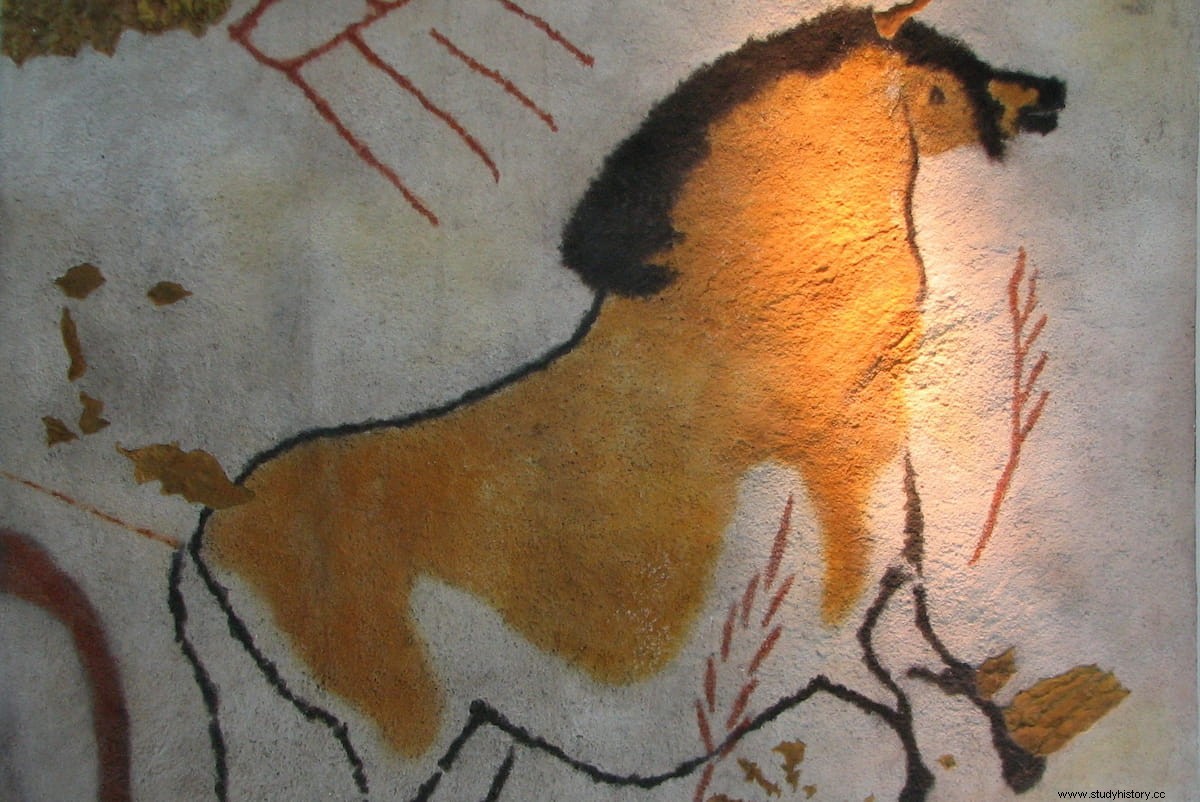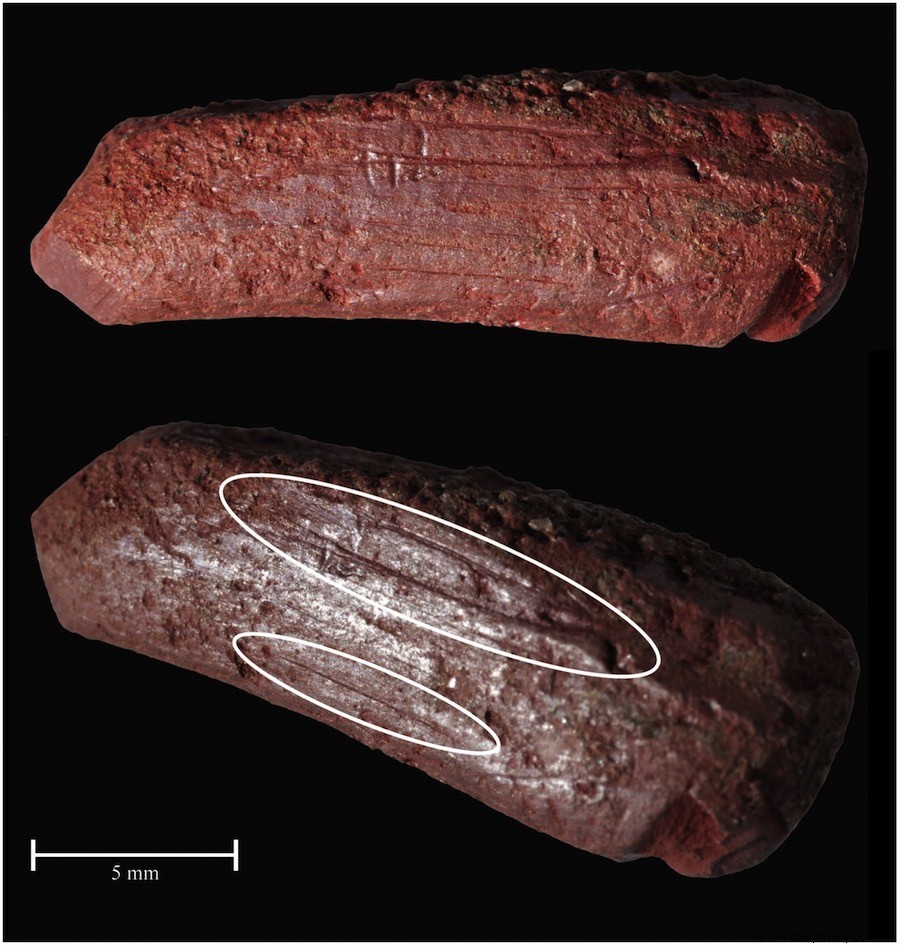Archaeologists from the universities of York, Chester and Manchester discovered what they consider to be one of the earliest artistic tools used by our ancestors some 10,000 years ago, a pencil prehistoric used for drawing.
The object, which is 22 millimeters long by 7 millimeters wide, was found in January 2018 in an old lake now dried up and covered in mud, north of Yorkshire in the United Kingdom. Another ocher pebble (the earthy mineral of iron oxide mixed with clay, whose pigment has been used since prehistory) also appeared in another site at the opposite end of the discovery. Both date from the Mesolithic period, better known as the Stone Age.
According to the researchers, color was very important in the lives of hunter-gatherers, and ocher provides a very vibrant red color . The discovered object looks like a crayon or pencil, the point is faceted and has gone from a rounded end to a really sharp one, suggesting that it has been used , said Professor Andy Needham of the Department of Archeology at the University of York.

The site where it was found, known as Seamer Carr in the Pickering Valley, would have been an important center during the Stone Age, featuring numerous examples of parietal art. It was probably used to make some of these paintings, and even to color animal skins.
It has grooves and grooves 6 millimeters deep, with a sub-rounded cross section with four flat surfaces and a pointed end, which would be traces left by the use of the object against granular surfaces producing red marks. It shows evidence of having been anthropogenically modified and used intensively, suggesting that it was deliberately shaped and used as a coloring and drawing tool, perhaps similar to a contemporary pencil.

The use of ocher is even older than our species, as evidence of its use by South African hominids has been found more than 200,000 years ago, and pigments prepared with ocher have also appeared in Neanderthal settlements.
Seamer Carr's crayon would be one of the oldest examples found of this type of tool.
Fonts
The application of micro-Raman for the analysis of ochre artifacts from Mesolithic palaeo-lake Flixton (Andy Needham et al., doi.org/10.1016/j.jasrep.2017.12.002)
